-
Posts
3,466 -
Joined
-
Last visited
-
Days Won
193
Everything posted by keithb7
-
I gave my chosen parts supplier my VISA number on Jan 1. As of yesterday my engine rebuild parts have still not shipped. I asked why. They are still trying to locate connecting rod bearings. I immediately did some research and found some within 15 mins, on E-bay. I found .0001" oversize. My crank is in decent condition. I will polish it 0.001" and use those bearings. Should be great! I wish they told me a month ago my entire order was held up due to the con rod bearings. Why do all these businesses like Eggy, Vintage Power Wagons and others, advertise parts and prices for items they can't supply? I have not yet taken my block to the machine shop. I won't until I have all my parts in-hand ready to go. This winter engine project began in late Oct 2020 when I pulled the head. I did not expect to be starting engine re-assembly in mid to late April 2021.
-
Agreed, fuel evaporates. You might have a little left in the carb bowl. When you floor the accelerator pedal once, if there is enough fuel left, you might get 1 squirt from the accelerator pump into the carb throat. The engine may fire a couple of times then die. You could also not get any fuel into the cylinders. Depends how much has evaporated from the carb. The mechanical fuel pump has to crank over, pumping fuel from the rear fuel tank, up into the carb bowl again. That can take a while of cranking. This is likely what you are experiencing. Refiling the carb bowl is accomplished by cranking the engine over with the starter. This turns the camshaft, which causes the fuel pump to do the work. You could install an in-line 6V electric fuel pump. You turn it on for 5-10 seconds, before cranking the engine over. The electric pump will fill the carb bowl quickly. For further depth if wanted: The fuel bowl is vented to atmospheric pressure. Fuel can and does, easily evaporate. Especially with all the ethanol in it. When the pistons are cranking, up and down, they are creating vacuum. This vacuum is present and manipulated up in the carb venturi. A low pressure point, less than atmospheric pressure is present now in the venturi. This little magical situation draws raw fuel from the carb bowl, via the jets into the venturi. If the car has not sat for an extended period, there is enough fuel in the bowl to allow this to easily happen. Saying that....You need lots of extra fuel when the engine is stone cold. The reason is, the raw fuel that enters the venturi is vaporized into a very fine mist. Like a heavy fog hanging over a cool swap at dawn, in the fall. When the engine is cold, this misty air/fuel mixture sticks to the intake manifold walls, and intake valve ports. It condenses and form droplets on the walls. So a lot of the fuel does not make it inside the cylinder to combust. So we choke the air supply off. Closing it with the choke valve. Then the vacuum created by the pistons, draws additional fuel, more than normal, into the carb venturi. So more fuel can get into the cylinder, even though much of it is sticking to walls and forming droplets. We often experience and recognize this as a rough running engine, until it warms up. This is due to uneven amounts of air/fuel mixture getting into each cylinder. As the engine and all its parts warm up, the nice misty fog does not condense any more. The choke opens up. Some automatically, some manually. A nice even-flow of air/fuel reaches the cylinders and we experience a nice smooth, even running, idling engine. This image illustrates this phenomena.
-
21" TV was considered a giant screen! Go back and tell someone in 1954 that in the year 2020, an 85" TV might be considered half decent, in your living room. They'd look at you dumbfounded and probably write you off as unstable.
-
I don't follow the news much. All I know about the cold weather and snow in Texas is what I read here in this thread. Sounds like a rough time. 40 hours without power or water? How cold did it get down there? I am hearing more of these disasters where the power grid goes down for a considerable length of time. I recall an ice storm in Quebec a number of years ago. Then there was the fires in CA last year. Generators got all bought up in both instances. The Texas cold mentioned here recently. I assume some folk's water pipes in their homes freeze up and burst? Then there is the hurricanes and tornadoes. Maybe I should invest in a bigger gen-set? Mine won't power up much. I am not a doomsday'er type but the recent news in Texas is making me think about my back up plan. I do have an RV trailer. I keep about 80 lbs of propane on average around here. If it were winter, It could run the RV furnace to heat the trailer for quite a while. I should maybe stock up on a little extra bottled water. I don't keep much here other than what comes out of the tap. A good reminder how dependent most of us are on modern supply chains of food, fuel/energy and supplies. If the trucks ever stopped rolling the stores would be barren in short order. This thread is about gardens. Majority folks today could barely yield a carrot. Let alone a crop, then store them for a year of eating until the next harvest. Look at how people panic'd when covid was first spreading? They all ran out and bought toilet paper! Lol.
-
In some examples do cars get updated just for the sake of updating? So all new features can be advertised and attract new buyers? Is newer better, just because its new? Not always. Yet in other ways newer is safer and in most cases needs less maintenance. All those cool old mom and pop gas and service stations dried up and disappeared. The list of regular maintenance items was indeed long, however not too technical. At least compared to today’s standards. From brake adjustments to points, valve sets, 100 lube points, and much more. Every little service station did alright. Today many cars only need a new filter and oil every 7-10K miles. Its got a million bells and whistles to tell you when it needs window washer fluid or air in a tire. Yet the average car lasts 5 years in the original owners hands. We crush ‘em probably at year what? 20? Built to last? No. Simple? Certainly not. 100 lube points? All gone along with the friendly gas jockey.
-
There is a pick up screen in the tank that I am aware of. It collects the larger chunks. Then there is the screen at the mechanical fuel pump. It gathers the next smaller junk that made it past the pick up screen in the tank. You'll see it settle in the glass bowl of your fuel pump. Next the tiny microns of dirt move on ahead to the carb. An in line filter will help keep the tiny particles of scale, dirt and rust out of your carb. Often found settled in the float bowl. If you put the filter between the mechanical pump and the carb, get a metal housed filter. Not a plastic one.
-
Totally. Lol. A picture tells the story.
-
By design it cannot lock up the rear wheel brakes. The rear wheel brakes are not at all engaged in any, way when the park brake on the drive shaft is engaged. The hand brake locks up the spinning drive shaft, which is connected to the diff, then out the axle shafts to the wheels. If you can lock up a rear tire or two while rolling, by pulling the park brake hard, you’re doing real well!
-
I've not the guts to test this theory...I have read about others who claimed they had to pull the emergency brake on hard while traveling, and tore out the driveline. I'd say that's more than just effective. I've no personal experience, it could be just old folklore. I only use my park brake assembly for parking and securing it and while idling the engine too. The brake works very well. I hope I never have to use it in an emergency to come to a stop. If I do, may the powertrain stay all bolted together in 1 continuous piece! ?
-
Follow up story: I keep my car on 4 dollies pushed up against the wall in my shop. Takes up leas floor space. I quickly jacked it up and pulled out today’s cruise. Out for my drive I heard a clunk. In the back. Sorta like something fell over in the trunk. Weird. I looked in my rear view mirror. I glaced at something small. Sorta looked like a small pylon from the distance I had gained. I shrugged and thought maybe I should pull over and see what I ran over? It was red. There are no red parts or pieces in my Windsor. I drove on. Later when I got home pulled out my rolling hydraulic jack again. Doh! Where’s the red cup that slides in the top? It cradles the diff when I jack up the car! Then it hit me... It must have wedged it’s self up against my diff housing. Stayed there when I lowered my car. It rode along for about 7 miles then fell off. Bounced off the pavent and careen’d off my gas tank. Two hours later I went back to see if it was still there. Somewhere pushed into the gutter. I swerved quickly as I almost dove over it myself! I Waited for a break in traffic and ran out to grab it. Whew! Got it back. A little scarred up. Many others drove over it.
-
The cold weather snap broke last night. -1C today. Roads are clear and dry. The sun even came out. How could I resist? I could not. Lots of folks happy to the see the old Chrysler out on the roads today. A lovely day for a Winter cruise.
-
Thanks for the plug. Be sure to watch part two. You can almost see the light bulb going off in between my ears.
-
No cases yet here in our house, nor our extended family members. We are faring pretty well up here. As I talk to people I am hearing more comments that's it's only a matter of time before we all eventually get it. It's been a year now. The shock and awe of it all, and locking ourselves inside away from our family and friends is wearing thin. Folks are getting sick and tired. I suspect average everyday people's attitudes are slowly edging toward the "I don't care anymore". Our government and policing of health rules continues to try and keep us inside and isolated. More and more, people are pushing back it seems. Yet, as mentioned, the number of cases here has been low. All the actions we've taken seem to be helping minimize the spread of Covid. Today the vaccine is out, yet Canada is struggling to maintain a steady supply chain. The thought of having everyone in Canada vaccinated by Sept seems to be materializing into a pipe dream up here. It appears that 2021 in Canada will be another year of no car shows, swap meets or any other car related gatherings. It's tough pill to swallow sometimes. When I think back about the last year, it's like a black hole void in time. A year lost with few fond memorable events. A period of our short time on this planet, where we lost the time to really happily live and enjoy life. We existed. Happy to be alive yes. But living life to the fullest? I'd not say we certainly were not able to do that in 2020/21. I get it. We need to do our part to control the spread. We are fortunate, those who have recovered, or not been infected. Covid times can't end soon enough. My sympathies to those who have lost loved ones to this disease.
-
I’ve considered this topic too. I live in a mountainous area. My old sedan has a 4.11 crown and pinion set. It makes sense as the sedan could be loaded up with 4 people and luggage. 4:11 would handle that pretty well. My car cruises comfortably at 50-55 mph. Above that she’s zinging pretty high for my comfort level. Yet she pulls hi-way hills easily at 50 as well, and can hold there. I’m sure lower rear end gears would kill the engine rpm on the same hi-way hills. Most of my driving consists of cruising in town. Even when I do get on the hi-way once in a while, over 55 mph is out of my comfort range in a 1938 car. This winter I’m boring up my engine size from 228 ci to 237 ci. This should net me good hp and torque gains for the steep hill home. It won’t lower high speed engine rpm on the hi-way any though. Yet if 3:95 or so rear end was available I’d consider that. I’d bet my new engine could pull it handily.
-
If you have an old car pick a Dyke’s Encyclopedia that was published a year or so after your car year. My experience is all the pertinent data for your car will be in it. Plus every single thing for decades before since probably since the invention of the internal combustion engine. As an example I own a 1938 Plymouth. If I recall my dykes manual was printed in 1940 or I think. It provides a plethora of information all relative to my car. The foundational stuff is all there too. Want to lean about T-head engines, magnetos, model T’s, how to build a shop even or vacuum advance? Its all there and so much more. Recommend for beginners. Amazing depth of knowledge. Dyke’s is more like a technical library for in-depth education. It does not contain tune up specs for your xxxx year car. Where the Motor’s manual does.
-
I assume full electric? I see the Fiat engineers are moving the front wheels further out to the bumper again. Just like they did 100 years ago. Look at the front axle! Wayyy out there!
-
Maybe...I know it's highly unlikely. Yet it's fun to think so. See pic below. I think I can see the round logo on the trunk hatch. The Plymouth ship in chrome, on the trunk. Only used in 1938 if I recall. I can see two chrome trunk hinges. The double split-pane rear window looks right. My P6 car was delivered new to Victoria BC 1938. An adjacent city is Vancouver BC where the old film was taken in 1942. Unfortunately Victoria is on Vancouver Island. There was no ferry vehicle service between the island and the mainland in 1942. Vancouver BC is on the mainland. So I doubt my P6 ever saw the streets of Vancouver. 9,050 or so Canadian made P6 Plymouths left the factory located in Windsor Ontario in 1938. I suspect many were shipped to British Commonwealth countries around the world. South Africa, New Zealand, Australia, India. To name a few. My understanding Chrysler were able to avoid excessive trade tariffs this way. Right across the bridge from Detroit USA, in Windsor Canada, the assembly line employees from each location may have been able to see each building. At least the smoke from the exhaust stacks of the steel foundries, where the blocks were cast in each country. Some of these cars were headed to countries that required RH steering. If you look at the P6 dash you can see the symmetrical design between the passenger side and the driver's side. The gauges sat in the middle of the dash. Therefore it was easier and more efficient for the factory to build either RH or LH drive cars. A dash photo is shown. The duct tape is gone and a new hand crafted latch/knob was installed. Made from a stainless steel bolt. That was a fun few minutes to pass an otherwise frigid winter day up here.
-
I wonder if adding some type of snake oil fuel additive, could nullify the effects of ethanol? Anyone know? If so, what product? Any actual evidence or lab results? Thanks.
-
@Sam Buchanan On hot ambient temp days climbing the steep hill home. Occasional bucking while climbing hill home. Throttle wide open, 3rd gear (1:1) for about a mile. Speed about 30 MPH max. Immediately after climbing the steep hill home, sometimes the engine would stall shortly after I got back on the level and let off the throttle. Hard starting after a brief heat soak. Hot engine, Hot ambient day. Pull into a store parking lot. 10 mins later come back out and attempt to start engine. Hard starting. Also some hard starting if shutting down a hot engine, after climbing hill home, and immediately attempting to re-start it. All symptoms mysteriously gone after switching to non-ethanol fuel.
-
I’d like to chime in and say that like many before me, I too was battling fuel related problems in my old flathead equipped car. I started only buying ethanol free gas. My annoying fuel related issues all disappeared. Never again, under my watch, will one of my old cars ever get ethanol blended fuel. Unless I have no choice.
-
I’m thinking minimum 1 acre. Rancher. Maybe 2 bedroom. Build It new and ultra efficient for low monthly operating costs. Then a 30 ft deep or so shop with heated floors. Triple wide. 1 big door wide enough for 2 cars and work benches, tooling ect. A separated bay with single garage door and good floor drainage. For indoor pressure washing. Canadian winters...We could all use our own heated pressure washing bay. High enough for a car lift. Plus a mezzanine for parts storage. The house details? No preference. My wife can do what she’d like.
-
Same over here. It has snowed the past couple of days. -18C is forecasted for Wed night. I was close. My job Filled my week. Closing the small window of opportunity.
-
I believe the 25" long Canadian block 3 7/16" bore , (237, 251, 265 ci) the same as the 25" long 3 7/16" bore American block. Same head gaskets and cooling passages. Biggest difference is, in Canada we only offered the 25" block from the foundry here. We bored and stroked the 25" all the way down to 218 ci. 3 3 ⅜ bore x 4 1/16 stroke.
-
I pull the plug. I use a large syringe. Low pressure. Squeeze in some grease. Re-insert plug. My understanding is you should never be using a grease gun, as it builds too much pressure?
-
Here's the cutter I used. I know there are more professional ways to do this. For a hobbyist at home, it worked fine. No shortage of grunt effort though.


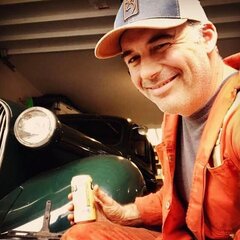

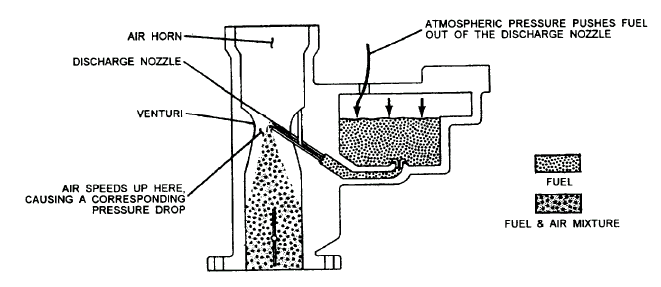
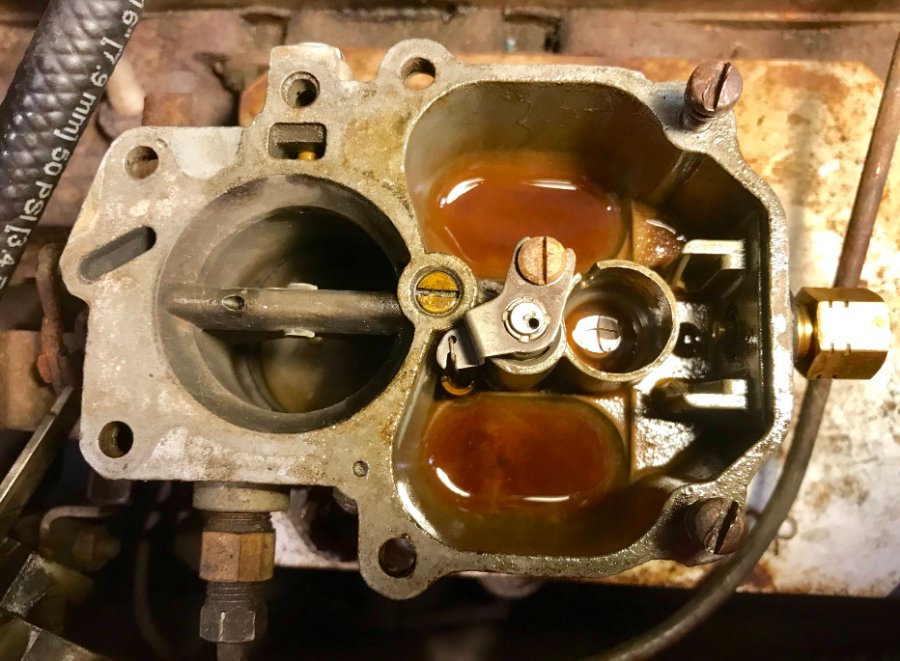
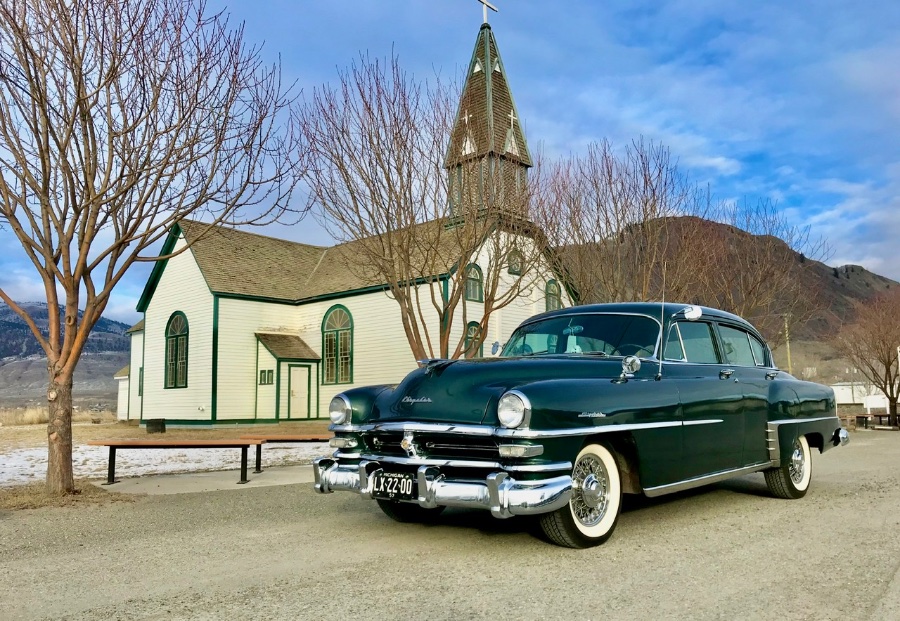
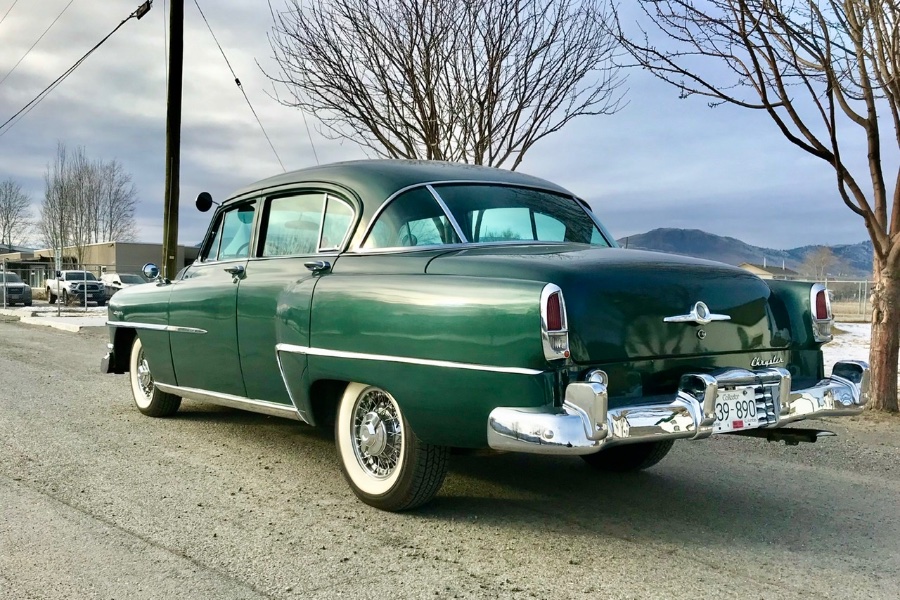

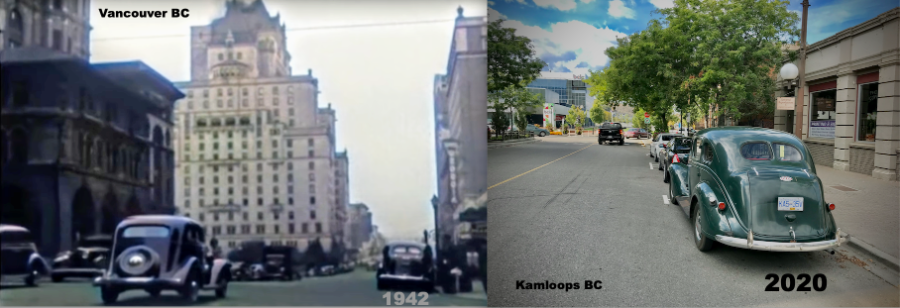
.jpg.ef3ffe1254cd4c84c4a68bdcff789677.jpg)
(1).jpg.f1dc3c00f0e76d1dfafe4382af3f70e1.jpg)